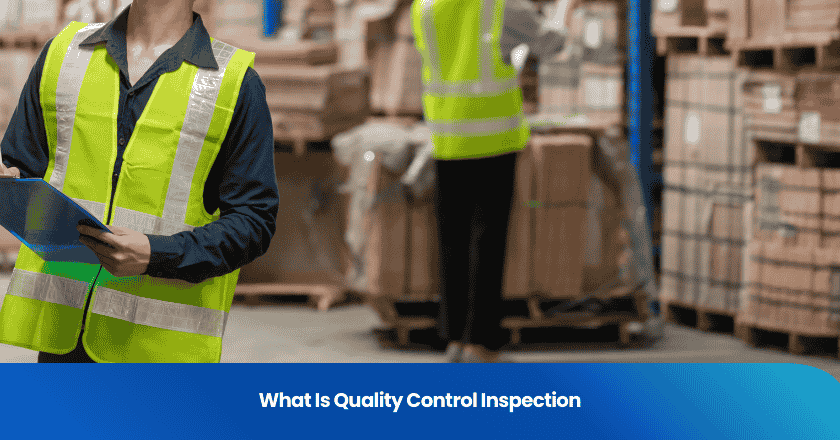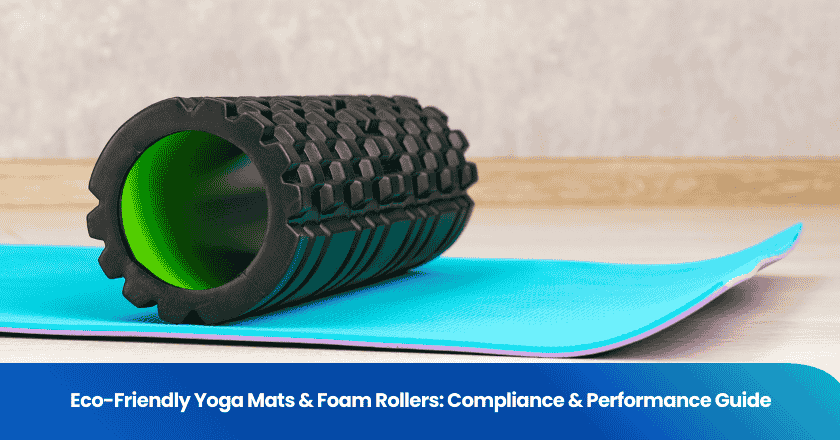
Quality control inspection, or what is quality control inspection, refers to the process you use to examine products or processes to ensure they meet established standards. You identify defects early and prevent them from reaching customers, which protects your reputation and reduces costs. By applying standardized criteria and investigating root causes, you systematically lower defect rates.
What is Quality Control Inspection
Definition
You encounter the term "what is quality control inspection" frequently in manufacturing and service industries. This process involves measuring, examining, and testing products, parts, or processes against specific requirements or quality standards. You use hands-on verification activities to confirm that each item meets established criteria. Quality control includes techniques and activities that help you achieve, sustain, and improve the quality of a product or service. Inspection and quality control work together to identify issues early and maintain consistency throughout production.
Quality control inspection forms the backbone of quality management. You rely on it to verify that every product or service aligns with customer expectations and regulatory requirements.
Main Purpose
When you ask "what is quality control inspection," you focus on its primary objectives. Inspection and quality control serve several essential functions:
- Maintaining product consistency: You ensure each product meets the same quality standards, which maintains precision and uniformity.
- Reducing costs: You catch defects early, which reduces rework and waste, lowering production costs.
- Boosting customer satisfaction: You deliver higher quality products, resulting in happier customers.
- Protecting brand reputation: You minimize defects, preventing expensive recalls and damage to your reputation.
- Ensuring and maintaining compliance: You follow relevant regulations, helping you avoid fines and legal issues.
Inspection and quality control processes provide a structured approach to achieving these goals. You use standardized procedures and thorough documentation to guarantee accountability and traceability.
Preventative Measures
You implement preventative measures during inspection and quality control to avoid defects and maintain quality standards. These actions help you detect problems before they escalate:
- Systematic defect logging
- Root cause analysis
- Embedding procedures into the production or software development process
- Conducting in-process inspections
- Implement standardized procedures
- Regular equipment maintenance and monitoring
- Comprehensive employee training and engagement
- Use statistical process control (SPC)
- Conduct periodic and random inspections
- Strictly adhere to quality standards
- Ensure traceability
- Quarantine and control non-conforming materials
- Leverage automation where possible
- Enable continuous improvement
You strengthen inspection and quality control by integrating technology, such as AI and automation, which enhances accuracy and efficiency. You also rely on regular training and clear guidelines to ensure everyone follows the same quality standards.
You tailor inspection and quality control processes to your industry’s needs. For example, manufacturing focuses on incoming material inspection, in-process testing, and final product verification. Construction emphasizes materials and workmanship inspection, while software development relies on code quality and bug tracking. Service industries prioritize customer experience and service delivery standards.
| Industry | Key Components |
|---|---|
| Manufacturing | Product specifications, incoming material inspection, in-process testing, final product verification, statistical process control, equipment maintenance, defect classification, material traceability |
| Construction | Materials and workmanship inspection, checkpoints for structural elements, material testing, safety compliance, documentation for building codes |
| Software Development | Code quality and functionality testing, testing methodologies, user acceptance testing, bug tracking and resolution |
| Service Industry | Customer experience standards, service timing protocols, customer feedback, quality audit procedures |
You use inspection and quality control to uphold quality standards, prevent defects, and ensure every product or service meets expectations.
Importance of Quality Control
Product Consistency
You rely on quality control to maintain product consistency across every batch. When you implement robust processes and automation, you reduce defect rates and ensure uniformity. A product inspection checklist helps you keep quality standards steady, lowering the risk of defects. You collect and test samples systematically from production batches, confirming that products meet expectations. This approach supports quality management and builds trust with your customers.
- Automation in quality control reduces defects.
- Inspection checklists maintain consistent standards.
- Sample testing validates product quality.
Cost Reduction
Quality control plays a vital role in lowering costs throughout your operations. Automated inspection systems save labor over time and enhance consistency. You shift human inspectors to complex tasks, increasing efficiency. Investing in quality control prevents errors and defects early, minimizing expenses related to rework, waste, and claims. Quality management strategies help you allocate resources wisely and avoid unnecessary spending.
- Automated systems reduce manual labor costs.
- Early defect detection prevents expensive rework.
- Proactive quality control minimizes waste.
Customer Satisfaction
You boost customer satisfaction by delivering products that meet expectations every time. Quality control ensures consistency, which is essential for positive customer experiences. Effective practices lead to high-quality products, fostering loyalty and trust. Standardized inspection processes help you avoid defects, recalls, and complaints, protecting your reputation and keeping customers happy.
- Consistent quality increases customer satisfaction.
- High-quality products build loyalty and trust.
- Inspection processes prevent costly recalls.
Compliance
Quality control inspection helps you meet regulatory requirements in industries such as pharmaceuticals and electronics. You follow strict guidelines and maintain detailed documentation to ensure compliance. Quality management systems oversee production, while trained personnel handle critical tasks. You track materials and finished goods for traceability and accountability.
Reputation
You strengthen your reputation by maintaining high standards through quality control. Strong measures ensure you deliver products that meet customer expectations and reduce costs from defective items. Reliable quality management enhances product quality and builds trust. Consistent performance across production processes increases customer loyalty and improves your standing in the market.
- High-quality products improve reputation.
- Reliable quality control builds customer trust.
- Consistency increases loyalty and market credibility.
Quality Control in Manufacturing
Inspection Process
You apply quality control in manufacturing at every stage of production. This approach starts with raw materials and continues through to the finished product. You follow a structured process to ensure each item meets your standards. Here is a typical sequence you might use:
1. Select a product sample from the factory.
2. Review the design and quality specifications.
3. Run a visual inspection of the product and its packaging.
4. Perform physical testing.
5. Document and share your findings.
You also use quality control in manufacturing to check incoming materials, monitor manufacturing processes, and verify final products. In warehousing and logistics, you inspect containers, verify product counts, and confirm packaging matches specifications. For example, you might conduct container loading inspections to ensure goods are packed safely. You also perform random carton checks to confirm the correct number of items per box.
Tip: Consistent documentation during each inspection step helps you maintain traceability and accountability throughout your manufacturing processes.
Testing Methods
You rely on a range of testing methods to support quality control in manufacturing. These methods help you identify defects and maintain high standards. Common techniques include:
- Visual inspection
- Dimensional inspection
- Statistical process control (SPC)
- Failure mode and effect analysis (FMEA)
- End-of-line testing
- Non-destructive testing (NDT)
- Automated optical inspection (AOI)
- Functional testing
- In-circuit testing
You select the appropriate method based on your product type and industry requirements. For example, you might use AOI and X-ray inspection in electronics, while automotive manufacturing often relies on end-of-line testing and SPC.
Defect Detection
You use quality control in manufacturing to detect and address defects before products reach customers. Advanced technologies, such as AI and machine vision, have improved detection rates. In some industries, detection accuracy now reaches 97% to 99%. Machine vision systems can achieve a recall rate of 100% and an F1 score above 92%. These improvements reduce false positives and help you save costs by catching issues early. Even a small yield improvement, such as 0.3% to 1%, can lead to significant savings in high-volume production.
You also perform final quality and quantity checks in logistics. This includes verifying the quality of goods before shipment and ensuring the correct number of items per order. By applying quality control in manufacturing and logistics, you protect your reputation and deliver consistent results.
Quality Control Inspectors
Roles
You play a vital role as one of the quality control inspectors in any production environment. Your daily tasks focus on maintaining product standards and preventing defects. You identify flaws, ensure compliance with regulations, and operate testing equipment to assess product quality. You collaborate with production teams to resolve issues and conduct root cause analysis to prevent future problems. You also perform final inspections before products leave the facility and generate reports that summarize your findings and corrective actions. Continuous monitoring of production processes and strict adherence to safety guidelines are essential parts of your responsibilities.
| Responsibility | Description |
|---|---|
| Defect Identification | You spot flaws and discrepancies in products. |
| Adherence to Quality Standards | You ensure products comply with industry regulations and safety guidelines. |
| Testing Equipment Operation | You use tools like calipers and gauges for precise assessments. |
| Collaboration | You work closely with production teams to communicate quality issues and recommend solutions. |
| Root Cause Analysis | You investigate underlying causes of quality issues to prevent recurrence. |
| Final Inspection | You conduct a last check to ensure all items meet required standards before distribution. |
| Reporting | You generate reports summarizing inspection results and corrective actions taken. |
| Continuous Monitoring | You engage in ongoing monitoring of production processes to maintain quality standards. |
| Compliance with Safety Regulations | You ensure all activities adhere to occupational health and safety guidelines. |
Skills
You need a diverse set of quality control inspector skills to succeed in your role. Technical expertise helps you understand manufacturing processes and use measurement tools accurately. Familiarity with industry guidelines, such as ISO standards and Good Manufacturing Practices, is crucial. You must keep detailed records for compliance and audits. Certifications from recognized organizations add credibility to your profile. Attention to detail, clear communication, and problem-solving abilities help you identify and address defects quickly. Adaptability and teamwork enable you to work effectively with different departments and adjust to new technologies.
- Understanding technical aspects of manufacturing processes
- Familiarity with ISO standards and GMP
- Proficiency in using measurement tools
- Strong record-keeping abilities
- Certifications from industry organizations
- Attention to detail
- Clear communication skills
- Problem-solving abilities
- Adaptability
- Teamwork skills
Workflow
You follow a structured workflow as one of the quality control inspectors in large-scale production facilities. You start by defining requirements and building a control plan. You allocate resources for inspection and check incoming materials. You evaluate the first production run and monitor processes using statistical process control. You conduct final inspections and functional tests before shipment. If you find defects, you manage non-conformities and perform root cause analysis. You verify corrective actions and close out issues. You analyze data and participate in management reviews to drive continuous improvement in quality control.
Tip: You improve product quality and consistency by following a systematic workflow and developing strong quality control inspector skills.
Challenges in Quality Control
Common Issues
You face several challenges when you manage quality control in any industry. In textile manufacturing, you often encounter a range of fabric defects that can impact product quality. These issues include color shading, dye streaks, holes, and misprints. Each defect has a specific cause, such as inconsistent dyeing or machine malfunctions.
The table below highlights some of the most common problems and how you can spot them during inspection:
| Fabric Defect | Description | Cause | Inspection Tip |
|---|---|---|---|
| Color Shading | Differences in color shades between fabric parts | Variations in dyeing batches | Compare rolls under consistent lighting |
| Dye Streaks or Dye Marks | Streaks or blotches from uneven dye penetration | Machine malfunction, uneven tension | Examine under natural and artificial light |
| Holes or Slubs | Small holes or thick yarns distorting fabric | Yarn breakage, poor spinning | Use a lightbox to detect small holes |
| Weft or Warp Bar | Lines differing in texture or color | Yarn tension variations | Run your hand over the fabric |
| Misprints or Off-Register Prints | Misaligned or blurred designs | Printing plate misalignment | Inspect for pattern consistency |
| Crease Marks or Pressure Marks | Permanent creases or shiny lines | Excessive pressure during rolling | Observe fabric in flat condition |
| Yarn Contamination | Foreign fibers in the fabric | Contamination during production | Inspect light fabrics with a magnifier |
| Uneven Texture or Thickness | Thicker or rougher areas | Inconsistent yarn quality | Check hand-feel and thickness |
| Chemical Stains or Oil Spots | Discolored patches from chemicals | Machine oil drips, contaminated storage | Use visual inspection and smell |
| Skewing or Bowing | Wavy or diagonal distortions in the fabric grain | Improper tension settings | Check straightness with measurement guides |
These issues make it difficult for you to maintain consistent standards and meet customer expectations. In electronics production, you may struggle with physical contamination, incorrect package fill, damaged products, and mislabeling.
Solutions
You can overcome many quality control challenges by adopting proven solutions. In electronics manufacturing, you benefit from automated systems that detect physical contamination, which helps you prevent costly recalls. Inline checkweighing systems allow you to verify product weight in real time, so you avoid overfilling or underfilling. Equipment that inspects product and package integrity ensures completeness and reduces waste. Vision systems check label accuracy, which helps you prevent mislabeling and related recalls.
Here are some effective solutions you can implement:
1. Use automated systems to detect foreign materials and ensure compliance.
2. Install inline checkweighing to monitor product weight during production.
3. Employ equipment that inspects product and package integrity for damage or missing parts.
4. Integrate vision systems to verify label accuracy and readability.
Tip: You improve your inspection process by combining technology with skilled personnel. Regular training and clear procedures help you adapt to new challenges and maintain high standards in quality control.
Quality Control vs. Quality Assurance
Differences
You often hear the terms quality assurance and quality control used together, but they serve different purposes in your operations. Quality assurance focuses on preventing defects before they happen. You design and implement process controls, map procedures, and train your team to maintain high standards. Quality control, on the other hand, detects defects after production. You inspect products, test samples, and document outcomes to ensure each item meets your requirements.
You use quality assurance to build strong processes and prevent problems. You rely on quality control to catch issues and remove defective products before they reach your customers.
Collaboration
You achieve the best results when quality assurance and quality control teams work together. In automotive manufacturing, quality assurance teams design and manage quality management systems. You establish process controls and conduct audits to meet industry standards. Your team also manages supplier quality to prevent defects from entering your production line.
Quality control teams inspect finished vehicles, run tests, and ensure compliance with safety regulations. You provide feedback on defects and quality issues, which helps quality assurance teams refine procedures and drive continuous improvement.
- Quality assurance drives process enhancement by reviewing and updating procedures.
- Quality control provides feedback on defects, helping you improve future production runs.
- You collaborate to share insights, solve problems, and maintain high product quality.
When you encourage open communication between quality assurance and quality control teams, you create a cycle of improvement. You prevent defects, detect issues early, and deliver reliable products to your customers.
You play a crucial role in ensuring every product meets high standards through quality control inspection. When you detect defects early, you prevent financial losses, reduce waste, and build customer trust.
“Quality inspection systems have saved us from a huge recall which could have bankrupted our company. It’s improved the overall quality on the production floor and reduced complaints and returns from our customers.”
By prioritizing effective quality control, you drive cost savings, continuous improvement, and a reputation for reliability.
FAQ
What is the difference between quality control and inspection?
Quality control covers all activities to maintain product standards. Inspection is one part of quality control. You use inspection to check products for defects and confirm they meet requirements.
How often should you perform quality control inspections?
You should perform inspections at key stages: before production, during production, and before shipment. Regular checks help you catch defects early and maintain consistent quality.
What tools do you use for quality control inspection?
You use calipers, gauges, microscopes, and automated systems. These tools help you measure, test, and analyze products for defects or inconsistencies.
Why is documentation important in quality control inspection?
Documentation helps you track defects, corrective actions, and compliance. You use records to improve processes and prove that you meet industry standards.
Can technology improve quality control inspection?
Yes. You use AI, machine vision, and automation to detect defects faster and more accurately. Technology helps you reduce errors and improve efficiency.
Grow your business with TradeAider Service
Click the button below to directly enter the TradeAider Service System. The simple steps from booking and payment to receiving reports are easy to operate.



